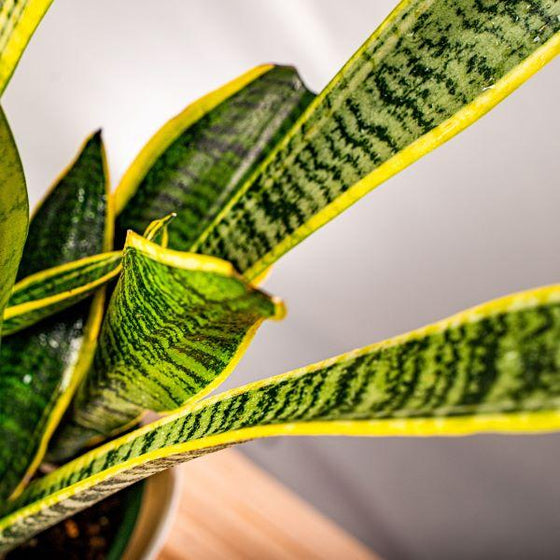Some Known Factual Statements About Snake Plant Leaves Turning Yellow
See This Report about Snake Plant Leaves Turning Yellow
Table of ContentsSnake Plant Leaves Turning Yellow for BeginnersThe smart Trick of Snake Plant Leaves Turning Yellow That Nobody is Talking AboutWhat Does Snake Plant Leaves Turning Yellow Do?The Main Principles Of Snake Plant Leaves Turning Yellow The Single Strategy To Use For Snake Plant Leaves Turning Yellow
If overwatering in snake plants is not corrected, the yellow spots of your mother-in-law's tongue plant will certainly turn dark brown or black. To eliminate any other root causes of snake plant fallen leave yellowing, remove the plant from its pot and check the roots to see if they're soaked and have a foul scent.
Right here's exactly how to conserve a serpent plant that's turning yellow: Stop watering your snake plant till the dirt runs out entirely if the yellowing results from overwatering. Return to watering, however not more than as soon as per week. Generally of thumb, prevent watering your serpent plant till the leading 2 inches of the soil really feel completely dry.
This will help to boost water drainage prices, considering the heat and sunlight problems during the day. Appropriate drain requires utilizing a fast-draining soil mix and a growing pot with drain openings at the base. It is best to make use of a dirt mix that consists of perlite and coarse sand for quick drainage.
Our Snake Plant Leaves Turning Yellow Ideas
There's a silver lining as you can grow brand-new plants by propagating the few remaining fallen leaves that are still healthy. Snake Plant Leaves Turning Yellow. Recommendations
Parasites, illness, overfeeding, absence of some nutrients, or being rootbound are feasible causes. Allow us currently take a look at each of these causes. We plan to provide you typical indicators connected with each reason and what to do. Water is necessary in soaking up nutrients necessary for chlorophyll. Additionally, absence of water creates the decomposition of chlorophyll.

A massive one might trigger overwatering, and if it is also tiny, your plants will dry promptly. When watering, fill the soil till excess water comes from drain openings. Put any kind of water that accumulates on the dish. Finally, never ever adhere to a serpent plant sprinkling session. Instead, always feel to make sure the potting mix is completely dry at the very least half-down the pot.
Snake Plant Leaves Turning Yellow Can Be Fun For Everyone
Otherwise, Look At This provide some top watering. Obtain a harsh quote on how usually you water your snake plant and set a reminder to avoid neglect. Yet before sprinkling, initially, really feel the soil with your finger. Light is necessary for the biosynthesis of chlorophyll in all blooming plants. Yet way too much will certainly degrade chlorophyll.
In hot summers or during warm waves, take your plants to cooler locations. Do not place your plants near residence home heating system vents, radiators, fireplaces, or anything that gives off warm.
Stunted development is an additional indicator. It activates enzymes involved in chlorophyll formation. A lack will trigger in-between capillaries yellowing on young fallen leaves. There will certainly be sluggish development and sunken tan places on the yellowed areas (Snake Plant Leaves Turning Yellow). When it is lacking, plants collect nitrates yet stop working to utilize them to make healthy proteins.
Although serpent plants have a record for being nearly impossible to eliminate, they however experience a reasonable share of problems. You are not the only one who has actually seen that your serpent plant's fallen leaves are turning yellow. We will analyze the reasons snake plant leaves turn yellow and how to handle it.
All about Snake Plant Leaves Turning Yellow
Given that serpent plants are vulnerable to root rot, they will certainly not thrive if sprinkled excessively. This is normally the excellent equilibrium if you allow your plant dry out however do blog here not let it stay completely dry. You can sprinkle your plant again as quickly as the dirt seems dry to the touch.
A damp container will weigh substantially larger than a completely dry pot, so ultimately, you ought to be able to figure out how completely dry your crop is based upon the mass of its container. Snake plant leaves may become yellow if you allow your plant dry, after that wait up until the soil is completely dry prior to rewatering.
You need to take into consideration even more than just how usually you water snake plants. You also should consider what occurs to the fluid when it is placed in the pot. After sprinkling your plant, you must not allow the origins stick around in water for a my website few days because this can trigger origin rot.
Yellowing fallen leaves can be treated by providing the serpent plant the appropriate environments and attention. Below are some of the reasons snake plants turn yellow and soft. Snake Plant Leaves Turning Yellow. You are essentially establishing your snake plant for death when you overwater it. If your plants begin to transform yellow, something is incorrect with your treatment.
The 45-Second Trick For Snake Plant Leaves Turning Yellow
You only need to provide sufficient supply and make sure right water drainage to allow the added water to drain out. Not way too much nor inadequate; there will be a suitable setting for fungis ailments if there is any standing water. The serpent plants can be sprinkled every two to six weeks.
After putting them in the morning sun, you will certainly see that snake plants' growth price would increase and appear much healthier. Nonetheless, placing them in the exterior early morning sunlight will certainly require much more water, so once weekly suffices. If the area receives excessive sunshine and the surface really feels completely dry, you can sprinkle them two times per week.